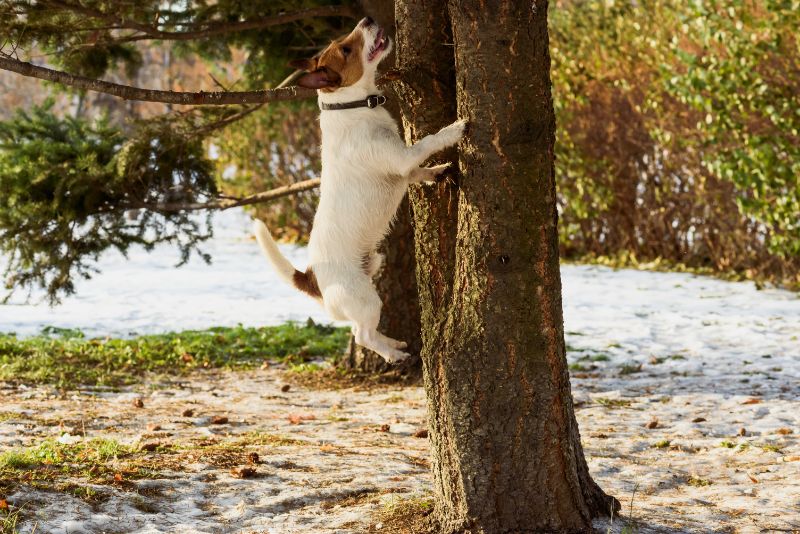How to Stop Your Dog from Chasing Squirrels, Birds, and Other Animals

Wildlife is abundant in Texas, including those that are venomous and carry zoonotic diseases, which are transmittable to humans. While wildlife are beautiful and necessary, domestic dogs still have their innate prey drive that causes thousands of wildlife related emergencies each year.
Many pet owners lament why they can’t stop the family Fido from running after wild animals, which carry disease and threats of injury. This is why the team at Leon Valley Veterinary Hospital is here to give you some suggestions on how to discourage your dog from chasing squirrels and other wild animals.
Training Your Dog to Avoid Wildlife
I know, I know…even the best behaved pooch will be just a little curious about a squirrel or bird. But there are ways you can divert your dog’s desire to chase animals through training, consistency, and patience.
- Make sure your dog has the basics. If your dog doesn’t obey basic commands, you have your work cut out for you. Forming a strong bond with your canine relies on maintaining your attention and authority. Work with your dog on positive training methods so that they respond to “sit”, “stay”, “drop it”, “come”, and other important calls.
- Increase the duration your pet holds the commands. Your dog may be okay with “sit” for a few seconds, but easily gets distracted and breaks the behavior. Start issuing the commands, then have your pet hold the commands that are applicable, such as “sit” and “stay” and “down” for up to 2-3 minutes. Reward the behavior as your pet stays in the commands.
- Use a controlled form of fetch. Practice with your pet some basic throw or fetch games using the “sit” and “stay” or “wait for it” commands. Find a favorite stuffed animal or ball and have your pet sit while you throw the object. Use the “wait for it” command as you release the object. Then tell them to “fetch it”, which is their cue to run and get it. Teaching them the patience of sitting and waiting for you to tell them to fetch reinforces that they must wait to get their desired object.
- Introduce exposure to birds and other animals. Practice your pet’s skills by going to a natural area or park where your dog is sure to encounter wildlife. See how well they maintain composure and respond to your commands. Continue to practice the commands and lengthy sit commands. How is your dog doing?
- Consider wildlife aversion training. This form of training is generally focused on rattlesnakes (naturally, since they are venomous). Yet, the same principles of training your dog to avoid certain animals can apply to a variety of species.
How to Stop Your Dog from Chasing Squirrels and Other Wildlife: Call Us!
If you need additional training on how to stop your dog from chasing squirrels, etc. please phone our team. We can help identify some of the challenges you’re facing in training your fur friend. Remember that wild animals carry serious diseases, like rabies, and can cause injury or death. This is why wildlife aversion training, whether done at home or with a professional, can be important to your dog’s health and safety.


